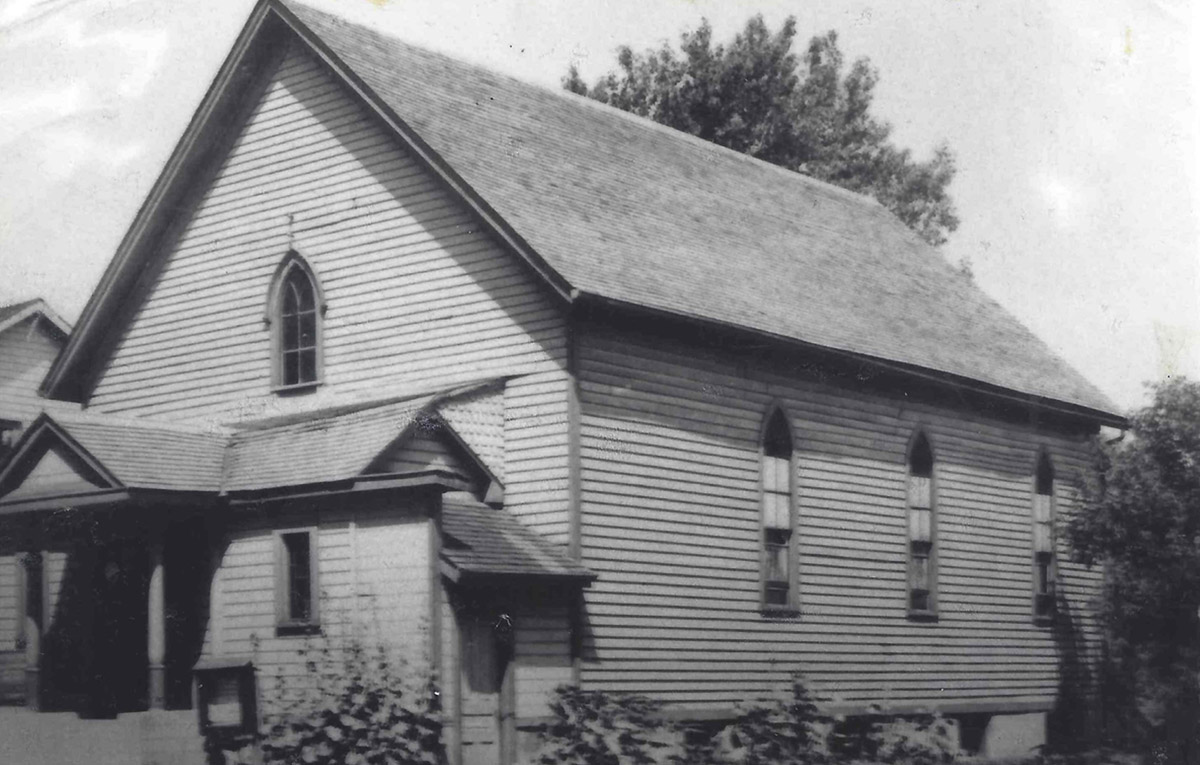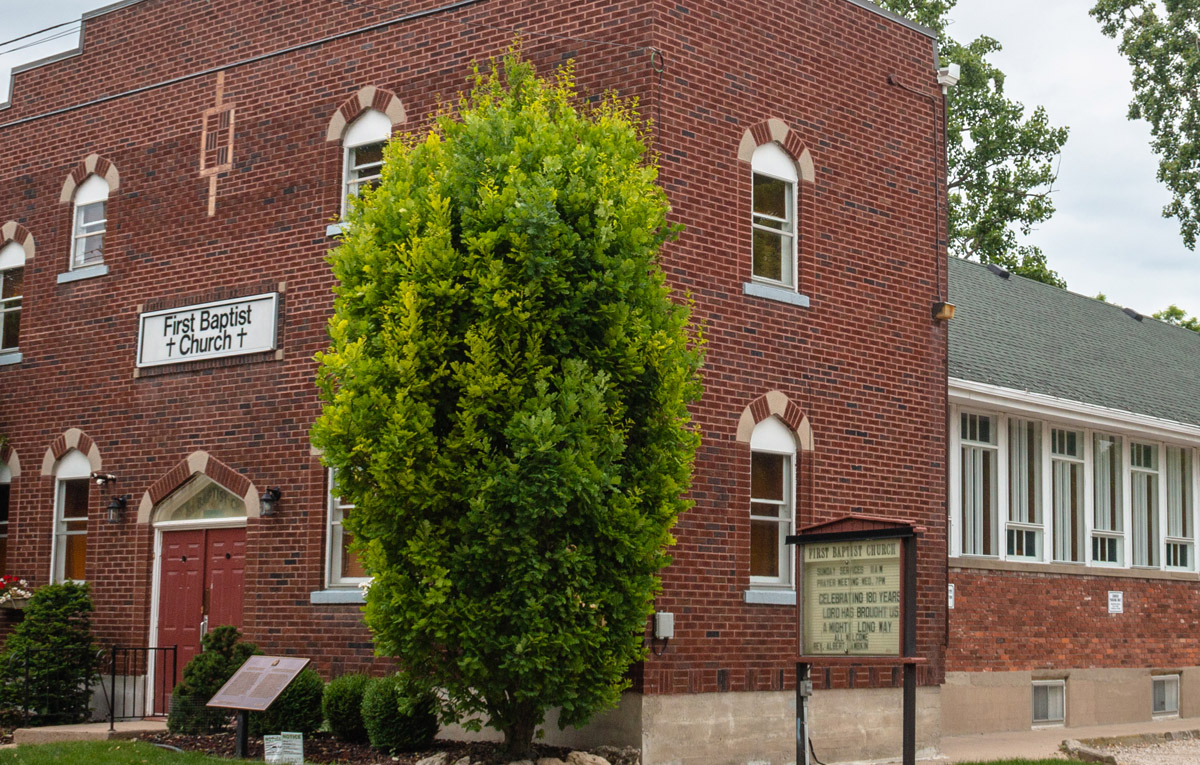The First Baptist Church
The First Baptist Church in Chatham first appeared in the Amherstburg Baptist Association records in 1845 with Elder Stephen White as their paster. Membership to the church numbered nine people at that time.
* * *
The next pastor of the church was Elder Hawkins. Hawkins was born enslaved in Kentucky and would eventually settle in Amherstburg when he came to Canada West. His first order of business when he came to head the First Baptist Church in Chatham was to build a new church. The building was completed on King Street East by 1853.
Eventually the First Baptist Church would gain a new nickname, “The John Brown Meeting House”. Brown, a white American abolitionist, went to Chatham and other places where formerly enslaved people had settled, to recruit for his attack on Harper’s Ferry. He thought that an attack on the federal arsenal there would spark an insurrection of the enslaved. While it failed and he was executed, the attempt made him a hero to the abolitionists. One man from Chatham, Osborne Anderson, joined Brown and was one of the few to survive the attack. He returned to Chatham and wrote an account of the event.
After Brown was refused use of the B.M.E. Church and held a couple meetings at other locations in town, he would hold his Convention on May 10, 1858 at the First Baptist Church. At these meetings the group would establish a plan and even create a constitution to set the frame work of a new government in the United States.
The church was extensively renovated in the 20th century and today still serves the Chatham Community and celebrates their long legacy in the abolitionist movement.
Eventually the First Baptist Church would gain a new nickname, “The John Brown Meeting House”. Brown, a white American abolitionist, went to Chatham and other places where formerly enslaved people had settled, to recruit for his attack on Harper’s Ferry. He thought that an attack on the federal arsenal there would spark an insurrection of the enslaved. While it failed and he was executed, the attempt made him a hero to the abolitionists. One man from Chatham, Osborne Anderson, joined Brown and was one of the few to survive the attack. He returned to Chatham and wrote an account of the event.
After Brown was refused use of the B.M.E. Church and held a couple meetings at other locations in town, he would hold his Convention on May 10, 1858 at the First Baptist Church. At these meetings the group would establish a plan and even create a constitution to set the frame work of a new government in the United States.
The church was extensively renovated in the 20th century and today still serves the Chatham Community and celebrates their long legacy in the abolitionist movement.


